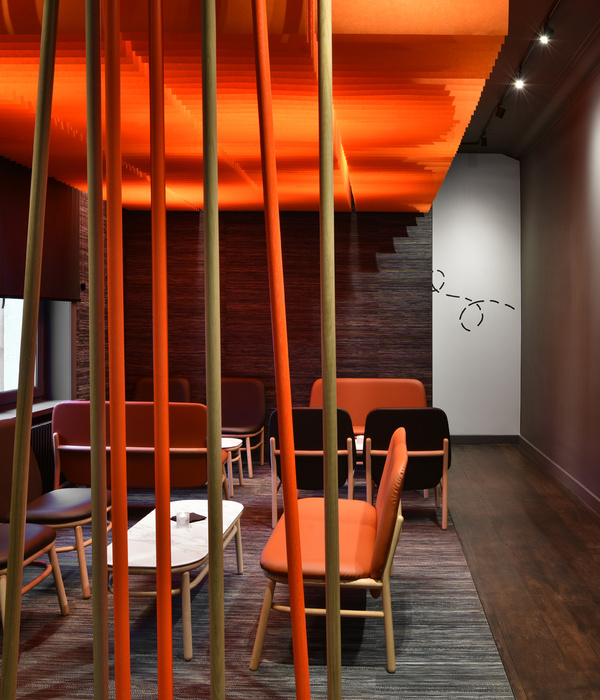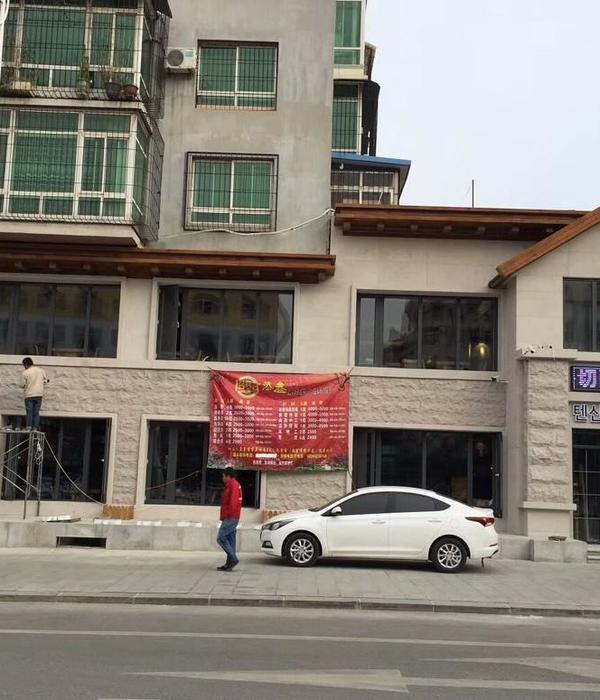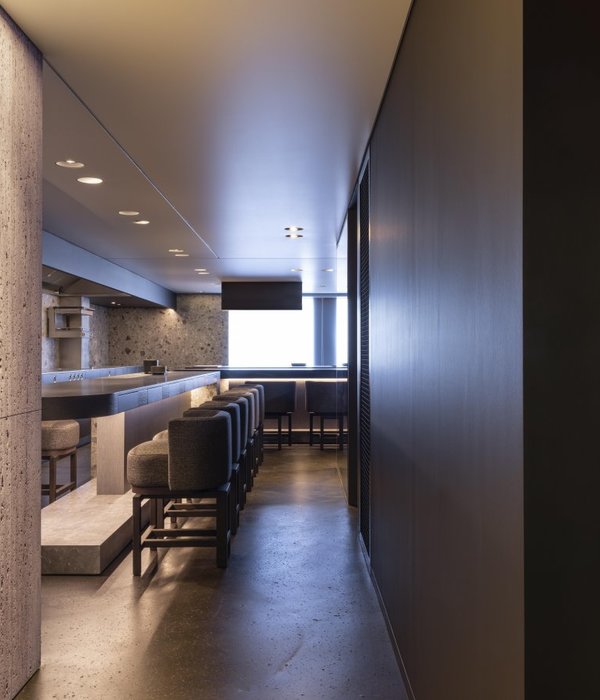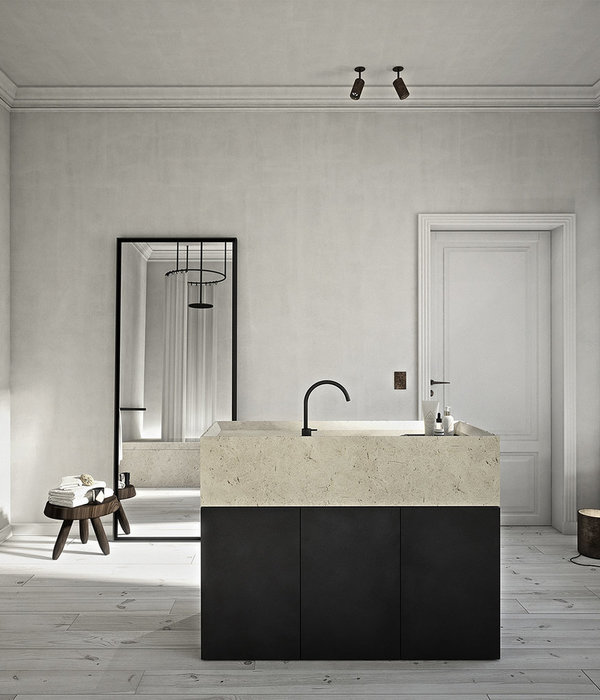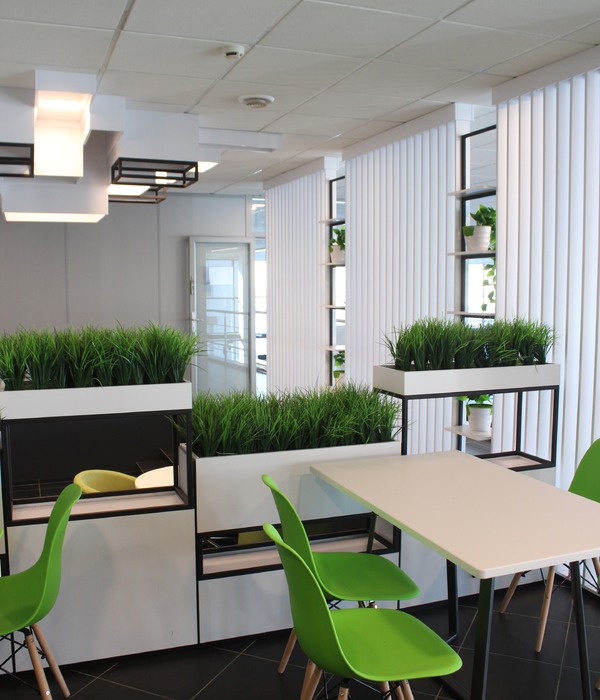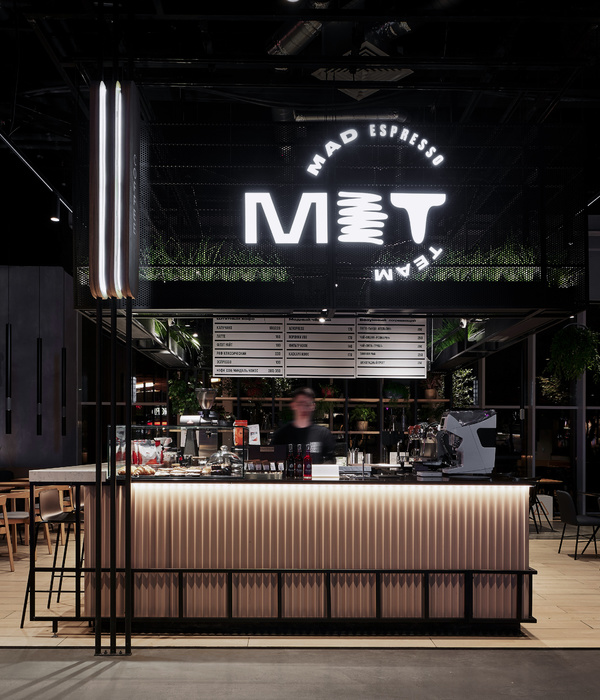The Food Biotechnology Research Center project comes from a Burgos University architectural competition in 2010, as an extension of the existing R&D&i building.
The competition proposed a building symmetrical to the one in which it was necessary to complete a program of laboratories and workspaces with an independent use of the building that had to be expanded.
With this initial approach, the boundary between the University Campus and the old train tracks, which were in the process of being transformed into a Railway Boulevard, was not solved.
In the proposal presented to the competition, which was only a project for a laboratory building, transformed a simple project for a laboratory building into an urban proposal to order the boundary between the Campus and the new Boulevard.
It was proposed a linear building that was articulated on the ground floor with the R&D&i Center, a transparent piece that completed and ordered the limit of the Campus boundary. A new background was generated through a subtle vegetation façade, a transparent living wall that merges with the surrounding vegetation.
Next to the three-story volume appear two pieces of one height. In the east side, a concrete wall merges with a pergola and opens up taking the alignment of the near Sciences Faculty. This pergola generates a pre-entrance space and a new square as a relationship place between the existing trees. This volume will be the new access to both buildings (Food Biotechnology Research Center and R&D&i Building), separated by means of a patio. Westerly of the main volume a single- story piece contains the rest of the proposed program on the ground floor which has to have an independent operation.
On the other hand, the decision to propose a linear building provides great flexibility to the project, which makes possible the future reorganization of the program.
The main body is built with the aim of creating diaphanous and modular spaces, interrupted only by utility ducks, which are necessary because of being a laboratory building. The whole building is modulated with a ninety centimeters module, visible both outside and inside. The horizontal structure is made with concrete beams along the façades with intermediate alveolar plate slabs in continuity with these. The opaque parts of the building envelope are constructed with prefabricated concrete slabs filled with 30 cm EPS. This results in high insulation and a reduction of its load allowing, for example, the patio envelope to be a glass. This system of prefabricated slabs is also used in the access body, where a cantilever of post-tensioned concrete beams of about 11 meters extends to the outside generating a previous space.
Longitudinal facades are constructed with modules of aluminum carpentry with thermal break profiles and high performance glasses, achieving the sought transparency. To allow the vegetation growth on the facades without interfering with the carpentry, there a steel cables system anchored to slabs edges with structural resin.
The annexed ground floor volume and the outside staircase are built with lacquered steel trays, which are perforated according to the interior needs, achieving a unitary image.
In a second phase, the Food Biotechnology Research Center second floor is conditioned and furnished. An intervention is proposed that seeks to transgress the original scheme with which the project was initially proposed, since it contained only laboratories and individual offices or compartmentalized spaces.
The starting point is to work a fluid space, open and continuous, consistent with current work trends, where the most significant is the researchers interconnection and dynamic workgroups generation. In this fluid space, we find built modules associated with the utility ducks, delimiting spaces that works in an independent way.
These fixed modules allow the rest of the space to be freed up, enabling the functional characterization to be made through the furniture.
Second floor materiality is conditioned by the rest of the building, however, the possibilities it offers are taken to the limit, with the purpose of achieving a fluid and contemporary workspace. Continuous pavements and steel suspended ceilings are maintained. The only partitions will be those enclosing meeting room or multipurpose room. These partitions are constructed of glass on a lower HPL panels base, adopting the other floors language. On the other hand, opaque modules are constructed as complex containers that incorporate the required program.
[ES]
El proyecto del Centro de Investigación de Biotecnología Alimentaria nace de un concurso de ideas convocado por la Universidad de Burgos en el año 2010, como ampliación del edificio existente de I+D+i.
El concurso planteaba un edificio simétrico al existente en el que había que completar un programa de laboratorios y espacios de trabajo con un funcionamiento independiente del edificio que se tenía que ampliar.
Con este planteamiento inicial no se resolvía el límite entre el Campus de la Universidad y las antiguas vías del tren, que se hallaban en proceso de transformación en bulevar ferroviario.
En la propuesta que se presentó al concurso, lo que era únicamente un proyecto para un edificio de laboratorios, se transformó en una propuesta para ordenar el límite entre el Campus y el nuevo bulevar.
Se propuso un edificio lineal que se articulaba en planta baja con el centro de I+D+i, una pieza transparente que completaba y ordenaba el límite del Campus. Se generaba un nuevo fondo de perspectiva por medio de una sutil fachada vegetal. Un muro vivo transparente que se funde con la vegetación circundante.
Junto al volumen de tres alturas aparecen dos piezas de una planta. Al este un muro de hormigón se funde con una pérgola y se abre recogiendo la alineación del edificio vecino de la Facultad de Ciencias generando un espacio previo al edificio, una nueva plaza como lugar de relación para los usuarios del Campus incorporando el arbolado existente. Este volumen será el nuevo acceso a ambos edificios (CIBA e I+D+i), independizados por medio de un patio. Al oeste del volumen principal una pieza de una altura recoge el resto del programa propuesto en la planta baja que ha de tener un funcionamiento independiente.
Por otro lado, la decisión de proponer un edificio lineal dota de gran flexibilidad a la propuesta, lo que posibilita la futura reorganización del programa.
El cuerpo principal se construye con el objetivo de generar espacios diáfanos y modulables, interrumpidos únicamente por los patinillos de las instalaciones, necesarios por tratarse de un edificio de laboratorios. Todo el conjunto se modula a partir de un módulo de noventa centímetros, visible tanto en el exterior como en el interior. La estructura horizontal se realiza con vigas de hormigón que recorren las fachadas con forjados de placas alveolares intermedias en continuidad con éstas. Las partes ciegas del cerramiento se construyen con muros huecos de prelosas de hormigón con treinta centímetros de EPS en su interior, con lo que se consigue un elevado aislamiento y una reducción de su carga, permitiendo, por ejemplo, que la planta baja del patio que vincula ambos edificios sea un vidrio. Este sistema de prelosas se emplea también en el cuerpo de acceso, donde un voladizo de vigas postesadas de hormigón de unos once metros se prolonga hacia el exterior generando un espacio previo.
Las fachadas longitudinales se construyen con módulos de carpintería de aluminio con rotura de puente térmico y vidrios de altas prestaciones, consiguiendo la transparencia buscada del conjunto. Para permitir el crecimiento de la vegetación por las fachadas sin que se interfiera con las carpinterías, se dispone de un sistema de cables de acero anclados a los cantos de los forjados con tacos y resina estructural.
El cuerpo anexo de la planta baja y la escalera exterior se construyen con bandejas de acero lacado, que se perforan según las necesidades interiores, consiguiendo una imagen unitaria.
En una segunda fase, se acondiciona y amuebla la segunda planta del CIBA. Se plantea una intervención que busca transgredir el esquema original con el que fue planteado el proyecto inicialmente, ya que contenía únicamente laboratorios y despachos individuales o salas compartimentadas.
El punto de partida es trabajar un espacio fluido, abierto y continuo, coherente con las formas de trabajo actuales, donde lo importante es la interconexión entre los investigadores y la generación de grupos de trabajo dinámicos. En este espacio fluido encontramos módulos construidos asociados a los patinillos verticales de instalaciones, delimitando espacios cuyo funcionamiento sería incompatible con el resto de las zonas de trabajo si no pudieran funcionar de forma independiente.
Estos muebles o módulos fijos permiten liberar el resto del espacio, posibilitando que la definición o caracterización funcional se realice a través del mobiliario.
La materialidad de la segunda planta viene condicionada por el resto del edificio, sin embargo, las posibilidades que ofrece intentan llevarse hasta el límite, con el propósito de conseguir un espacio de trabajo fluido y contemporáneo. Se mantienen los pavimentos continuos y el falso techo metálico de lamas acústico. Las únicas particiones serán las que encierren las salas de reuniones o multiusos, que serán de vidrio sobre un antepecho revestido con paneles HPL, adoptando el lenguaje de las otras plantas. Por otra parte, los núcleos ciegos que forman un conjunto con las particiones de vidrio se construyen como contenedores complejos que aglutinan el programa.
Year 2016
Work finished in 2016
Client University of Burgos
Status Completed works
Type Corporate Headquarters / Offices/studios / Colleges & Universities / Research Centres/Labs / Interior Design
{{item.text_origin}}

